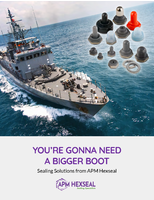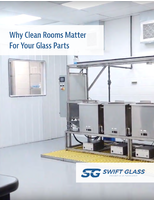Needle Puncture Resistance Standard applies to protective clothes.
Press Release Summary:
ASTM F2878, Test Method for Protective Clothing Material Resistance to Hypodermic Needle Puncture, was developed by Subcommittee F23.20 on Physical, which is part of ASTM International Committee F23 on Personal Protective Clothing and Equipment. F23 member John Cronin notes that ASTM F2878 "addresses a critical gap" by enabling users of needle-resistant personal protective equipment to "make an apples-to-apples performance comparison when evaluating various forms of protection."
Original Press Release:
Hypodermic Needle Puncture Resistance Standard Developed by ASTM Protective Clothing Committee
W. CONSHOHOCKEN, Pa.-Due to risk of infection from blood-borne pathogens such as human immunodeficiency virus and hepatitis C, hypodermic needle sticks pose a life-safety risk to healthcare professionals, law enforcement officials, sanitation workers and others. A new ASTM International standard addresses the unique mechanics of hypodermic needle puncture as related to protective clothing. ASTM F2878, Test Method for Protective Clothing Material Resistance to Hypodermic Needle Puncture, was developed by Subcommittee F23.20 on Physical, part of ASTM International Committee F23 on Personal Protective Clothing and Equipment.
"Over the past several years, a number of new protective equipment technologies have been developed to prevent needle stick, however, there has been no standardized test method available for technology developers and users to reference when conducting comparative analysis," says John Cronin, product manager, Warwick Mills Inc., and an F23 member. "With the publication of ASTM F2878, there is now an appropriate method for conducting comparative analysis of hypodermic needle puncture resistance."
Cronin notes that environments in which needle stick-resistant personal protective equipment is needed are varied and dynamic and that no single standard can fully replicate the conditions to which this equipment is exposed. "However, ASTM F2878 addresses a critical gap in users' ability to look at overall personal protective equipment performance in a comprehensive way," says Cronin. "Users of needle-resistant personal protective equipment can now make an apples-to-apples performance comparison when evaluating various forms of protection."
To purchase ASTM standards, visit www.astm.org and search by the standard designation number, or contact ASTM Customer Relations (phone: 610-832-9585; service@astm.org). ASTM International welcomes and encourages participation in the development of its standards. For more information on becoming an ASTM member, visit www.astm.org/JOIN.
ASTM International is one of the largest international standards development and delivery systems in the world. ASTM International meets the World Trade Organization (WTO) principles for the development of international standards: coherence, consensus, development dimension, effectiveness, impartiality, openness, relevance and transparency. ASTM standards are accepted and used in research and development, product testing, quality systems and commercial transactions.
View this release on the ASTM Web site at www.astmnewsroom.org.
ASTM Committee F23 Next Meeting: June 14-16, 2011, June Committee Week, Anaheim, Calif.
Technical Contact: John Cronin, Warwick Mills Inc., New Ipswich, N.H., Phone: 603-291-1002; jcronin@warwickmills.com
ASTM Staff Contact: Stephen Mawn Phone: 610-832-9726; smawn@astm.org
ASTM PR Contact: Barbara Schindler, Phone: 610-832-9603; bschindl@astm.org




